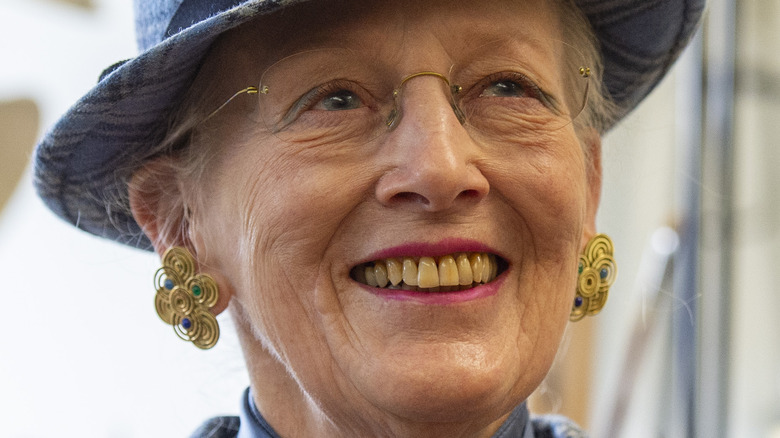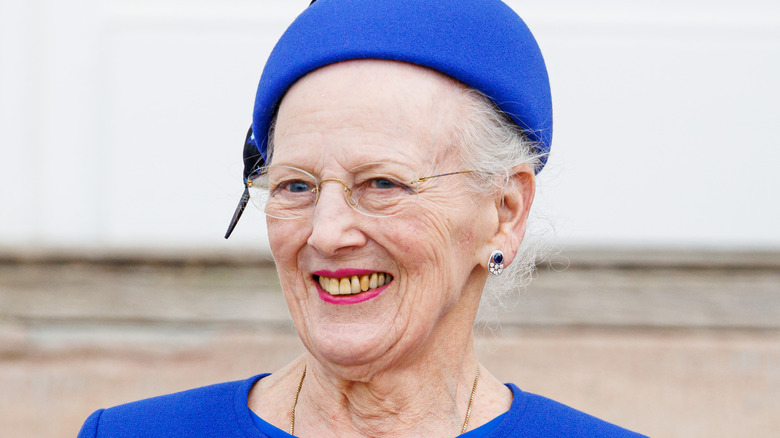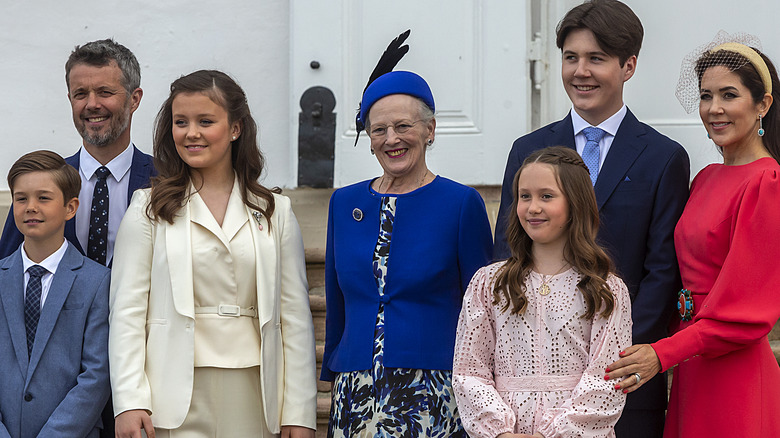How A 1950s Danish Law Allowed Margrethe II To Become Queen Of Denmark
When it comes to monarchies in Europe, the British royal family is probably the first that comes to mind. However, they are only one of 12 ruling monarchies on the continent, per MyLondon. One thing that Britain can boast of its royal family is Queen Elizabeth II's 70-year reign, which is the second longest in world history (via NPR). Elizabeth ascended the throne in 1952 following her father King George VI's death, making her a queen regnant — a title given to a queen when she has directly inherited the throne (via Royal History Geeks).
The only other European queen with this title is Queen Margrethe II of Denmark. She ascended the throne in 1972 after the death of Frederick IX of Denmark (via Denmark's official website). Unlike the UK, which has had eight queens dating back to 1141, per Royal Central, Margrethe is only the second Queen to sit on the Danish throne. The first was Margaret I of Denmark, the daughter of Valdemar IV of Denmark. She married Haakon VI of Norway and was considered a consort and regnant due to her father being king (via Britannica). This was despite the Danish Act of Succession favoring a male heir. But thanks to a certain change in law centuries later, Margrethe was crowned Queen of Denmark.
But why did this happen, and how did it help Margrethe become heir presumptive to the Danish monarchy?
The Danish Act of Succession was changed in 1953
At the time of Queen Margrethe II of Denmark's birth in 1940, there was no constitutional way she would rule the Nordic country one day as only males were permitted to inherit the throne. But on March 27, 1953, royal Danish women were finally given the right to succession (via the Danish Royal Family website). However, there was a catch. Despite women being given the opportunity to ascend the throne, men were still sought after as heirs meaning a girl would be skipped over as heir presumptive if they had a younger brother.
But Margrethe remained heir presumptive as she had two younger sisters — Princess Benedikte of Denmark and Queen Anne-Marie of Greece (via Wonderful Copenhagen). Margrethe was 13 years old when this change to the Act of Succession was enacted, but it would be a while before she took to the throne herself. After her father's death, she was crowned queen of Denmark in 1972.
Denmark altered the Act of Succession even further
It took even longer for the Danish Act of Succession to be changed further, i.e., that the firstborn would become the reigning monarch, regardless of gender. It wasn't until 2009 that Denmark voted for a historical change in the line of succession (via Deutsche Welle). After a vote, an overwhelmingly large 84.6% of voters supported the change. In response, then-Prime Minister Lars Løkke Rasmussen said the decision was a "strong signal that shows that we want to be a society where men and women have the same opportunities, whether it is for ordinary people or princes and princesses."
Two years later, the British monarchy followed suit and announced a change to their Act of Succession in 2013. It eventually came into effect in 2015, when William, the Duke of Cambridge, and Kate, the Duchess of Cambridge's daughter Princess Charlotte of Cambridge, was born (via CNN). The change meant that when Prince Louis of Cambridge was born in 2018, he didn't overtake his sister in the line of succession. Instead, she remains fourth in line to the throne behind her older brother, Prince George of Cambridge, who's third in line.


